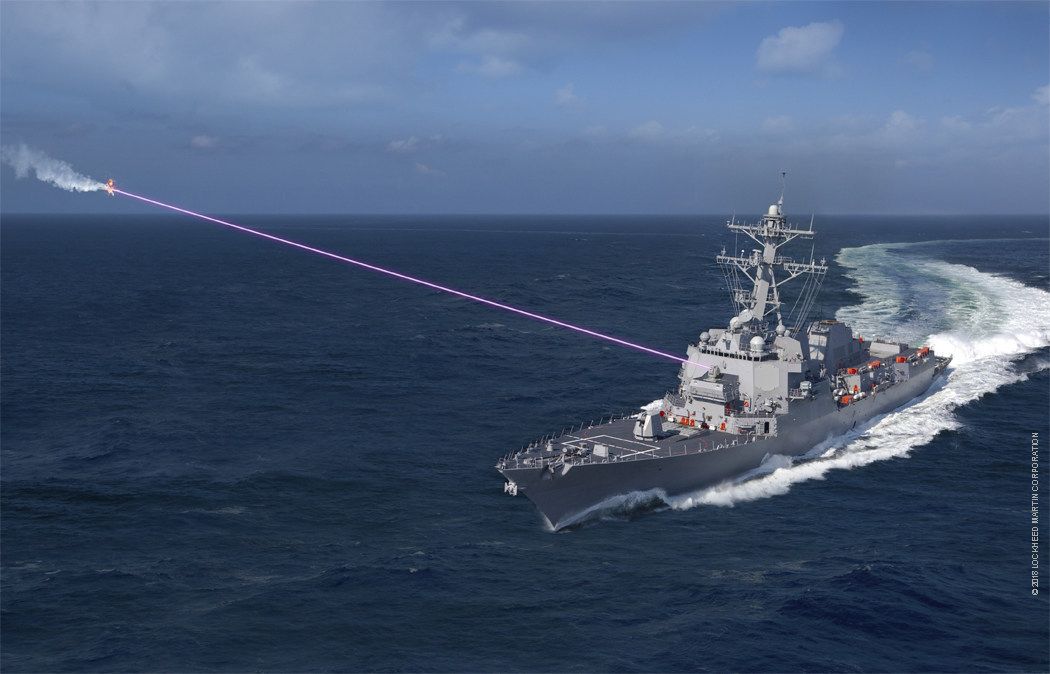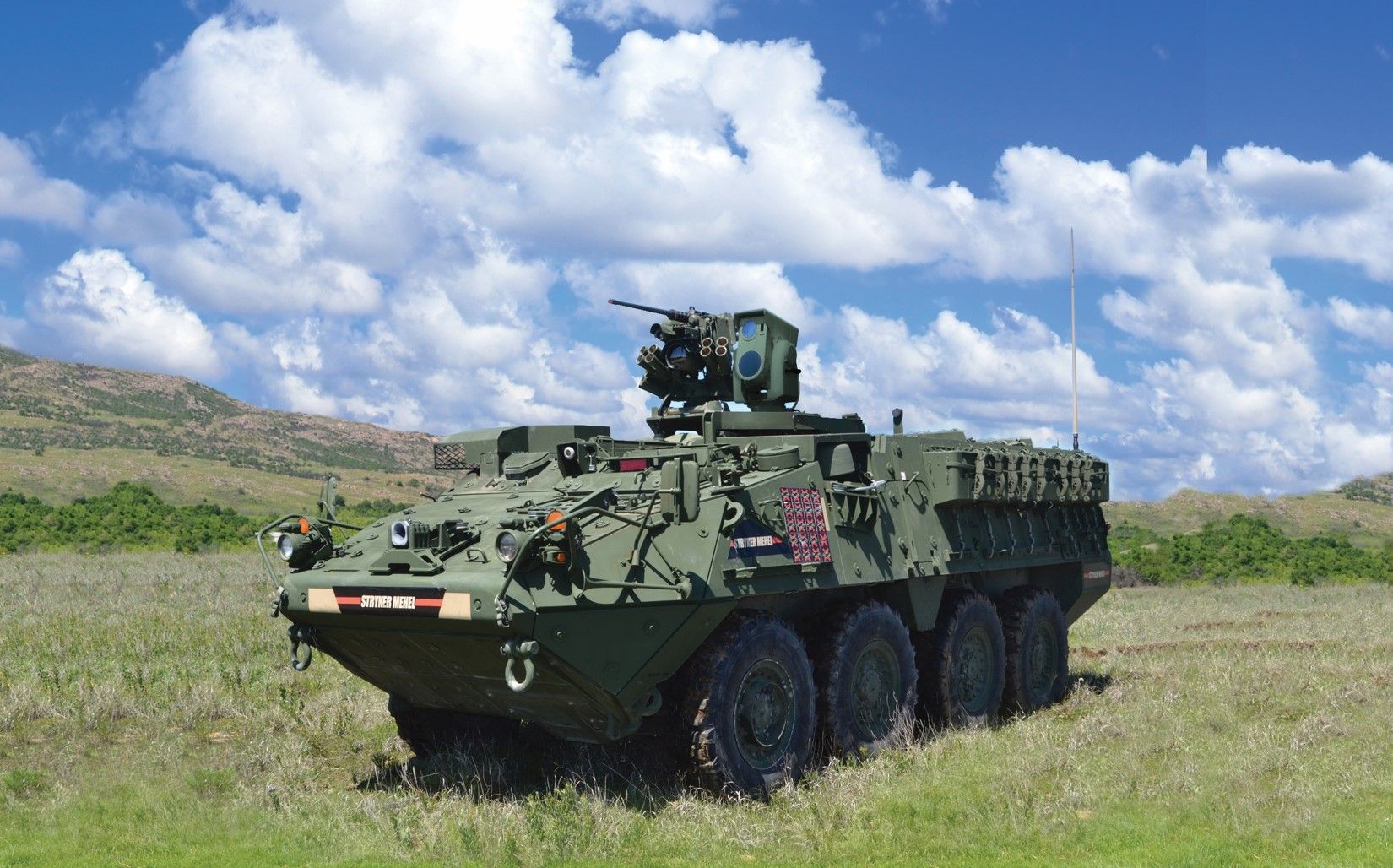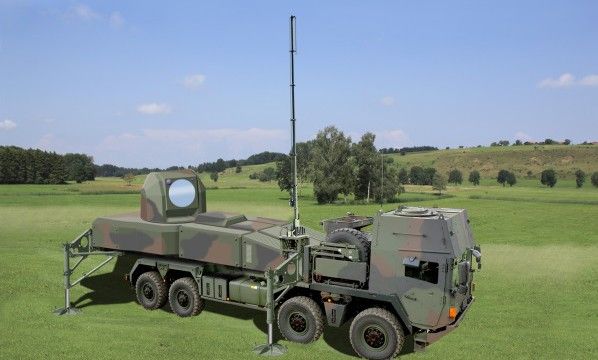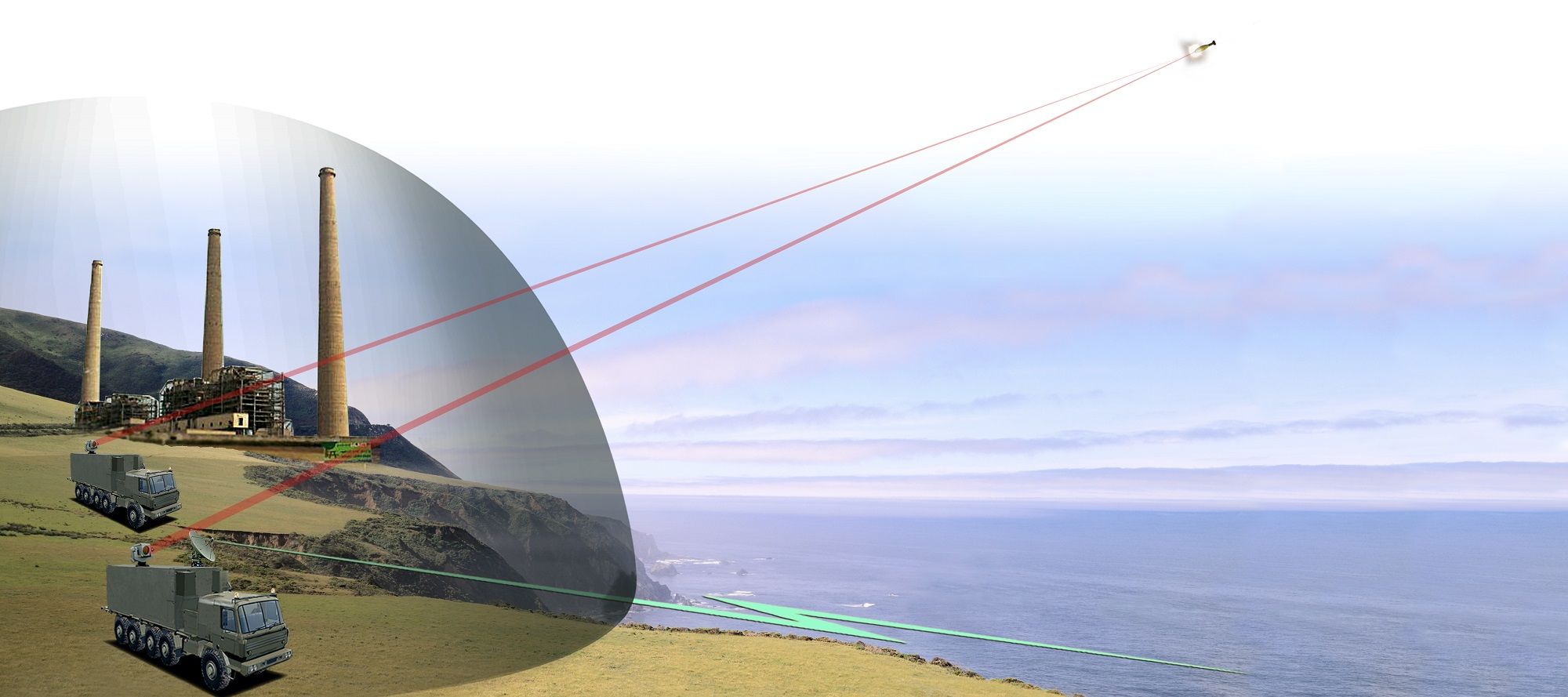The best way to defend against future threats?
Development of lasers or directed energy (DE) systems has long been the realm of science fiction but the past decade has seen a focus on these for military purposes as a way to respond to new threats. High energy laser (HEL) systems are being seen as the best way to defend against future threats such as potential swarms of UAVs, and existing ones like rockets, artillery and mortar shells, which are relatively cheap to produce but can cause significant damage to or destroy expensive platforms.
A US Congressional Research Service report on DE weapons published in February 2018 stated: “HEL weapons cost relatively little to intercept targets compared with conventional munitions.”
It cited the cost of existing air defence systems such as the PATRIOT Advanced Capability-3 (PAC-3) missile that costs $3.3 million; the Terminal High Altitude Area Defense (THAAD) missile that costs $9 million; and the Standard Missile-3s (SM-3) for $10-15 million; all of which, “are employed against threat systems costing a fraction of these missiles’ price tags […]HEL weapons reportedly can cost as little as $30 a shot while achieving an equivalent or superior probability of kill.”
Using an HEL coupled with a sophisticated detection and tracking system, it is possible to direct a high level of energy very accurately at a target at the speed of light. The resulting beam is unaffected by gravity or air flow and is very difficult for targets to counter or evade. Therefore, laser systems can hit incoming UAVs or munitions very quickly and without the risk of running out of ammunition. With a stable power supply and efficient cooling system, the lasers can keep on running, so there is less risk of being swamped by an attack.
The challenges with lasers have always been how to produce enough energy and direct it onto the same spot at range – hence the high energy requirement for a laser weapon. Laser cutting machines have been widely available in industry for some time, but these are lower in power and operate very close the material they are cutting. Another challenge is that the beams only travel in straight lines so targets have to be in the line of sight; and lastly the beam energy could be dissipated through the effects of water vapour, dust and obscurants limiting its effect in poor weather or in bad terrain. Therefore laser systems are seen as a supplement to an existing air defence inventory rather than a replacement.
The US has been at the forefront of laser technology development and recent efforts are starting to take the lasers out of the laboratory and onto land, naval and air platforms. Here the main challenge is related to space because the size of the whole laser system includes power generation, cooling, and the sensor and targeting components that have large form factors and thus make installation on vehicles and aircraft difficult.
For the US Navy (USN) there is less of an issue. The large size of ships and their existing sensor and power generation systems means that a laser can be installed without the adverse weight considerations that will affect smaller platforms.
Research and development work by the US Army Space and Missile Defense Command (SMDC) has seen the production of a 60kW high power laser under the Robust Electric Laser Initiative (RELI) and HEL Mobile Demonstrator (HEL MD) programmes. This laser is being used as the base design for the main weapon components of navy, army and air force HEL efforts.
In March 2018, Lockheed Martin was awarded a contract worth $150 million by the USN to build two high power laser systems with ISR and counter-UAS capabilities by FY2020. The system has been named the High Energy Laser and Integrated Optical dazzler with Surveillance (HELIOS) system and it will become the first navy effort to integrate a laser, ISR and C-UAS capability onto a USN surface vessel.

The HELIOS system will be able to counter UAS and small boats. It includes a cooling system and an energy and thermal management system that is sufficiently flexible for installation on ships and can be integrated into the AEGIS combat management system, which is already provided by Lockheed Martin. The dazzler element is designed to counter the ISR systems fitted on hostile UAS.
Of the two units due for delivery in 2020, one will be delivered for shipboard integration on an ARLEIGH BURKE-class destroyer, whilst the other will be used for land testing at the White Sands Missile Range. There are options worth up to $942.8 million for the procurement of further systems if required.
Dr Rob Afzal, senior fellow of laser weapon systems at Lockheed Martin, told MONCh that the company is leveraging the Army SMDC RELI/HEL-MD contract work and the power of the HELIOS laser has now reached between 60-150kW. He said that this level of laser power has, “been shown to be effective against UAV and C-RAM targets.”
But Lockheed Martin is bringing improvements to the laser system to ensure that a higher percentage of the electrical power generated for the laser can be directed into the laser beam. “Our Spectrally Beam Combined [SBC] Fibre lasers have demonstrated power scaling. This is the key innovation Lockheed Martin has brought to solving the last piece of the puzzle for high power lasers, which is efficiently scaling high power lasers while maintaining beam quality,” Dr Afzal explained.
A ‘beam combined fibre laser’ means bringing together individual lasers, using fibre optics, to generate a single, intense beam. The advantage is that it is scalable, since power can be increased with the addition of further fibre laser subunits.
HELIOS will use the ship’s power generation system to provide electrical power for the laser system and no additional power system is required. Dr Afzal stated that, “both power and cooling need to be increased as you increase power. Our fibre laser SBC solution, however, is the most efficient laser architecture at converting electrical power into a high-power beam, therefore the power and cooling requirements are minimised.” He added that the greatest challenge will be “ship integration and a rapid schedule” and that whilst the weather, “can provide challenges,” in the operation of laser systems they, “can still perform useful missions under adverse conditions.”
Lockheed Martin’s contract with the USN follows the award of an earlier contract from the US Air Force Research Lab (AFRL) in November 2017 for $26.3 million, covering design, development and production of an HEL for testing on a tactical fighter aircraft by 2021. It is part of the AFRL’s Self-Protected HEL (SHiELD) programme to try and introduce laser systems on air platforms and represents a significantly harder prospect than installing them on ships, particularly in terms of beam control and targeting. Lockheed Martin and Boeing are both involved with the development project.
SHiELD aims to produce three subsystems that will ensure that the challenges of the air environment can be overcome, particularly stability. The first is a beam control system known as SHiELD Turret Research and Aero Effects (STRAFE), which will allow the laser to be directed onto the target. The second is a pod system in which the laser weapon will be installed to allow integration onto an aircraft. Designated Laser Pod Research and Development (LPRD) , it will also power and cool the laser. Thirdly is the laser itself, called the Laser Advancements for Next Generation Compact Environments (LANCE), that aims to produce a weapon that can fit onto a tactical fighter aircraft and meet very stringent size and weight requirements.
Lockheed Martin has already delivered a single beam 58kW laser to the US Army in March 2017 and the LANCE system is likely to be an adaptation of this for the airborne environment. The level of power might need to be increased, however, if the AFRL wants larger targets beyond UAS-type systems to be destroyed: this is the main challenge – to generate extra capacity on a downsized system. The company was not able to comment on the next steps of development on this programme but Dr Afzal has stated: “It’s a completely new and different challenge to get a laser system into a smaller, airborne test platform.”
The beam combined 58kW laser was developed under the US Army RELI programme and allowed a larger 60kW category laser to be scalable and fitted to small platforms. Dr Afzal stated that this laser beam was near ‘diffraction-limited,’ meaning it was close to the physical limits for focusing energy toward a single, small spot. The company has stated the laser is highly efficient in testing, capable of translating more than 43% of the electricity that powered it directly into the actual laser beam it emitted.
It is unclear what additional target sets a 60kW category laser can destroy, but it can easily counter UAS and rockets, artillery and mortars, as this capability was already proven by Lockheed Martin using a 30kW ground-based laser called ATHENA in 2015, which also disabled a truck from a distance of one mile. In further tests in 2017, ATHENA was used to neutralise five 10.8ft-wingspan OUTLAW unmanned aerial systems at the Army’s White Sands Missile Range in New Mexico. However, the distances that an airborne platform will have to engage at will require far higher power levels to achieve the same effect.
The US Missile Defense Agency (MDA) is running a nine-month study into a Low Power Laser Demonstrator missile interceptor concept, and awarded a $9.4 million contract to Lockheed Martin in October 2017. Ron Dauk, Program Manager for Laser & Electro-Optical Systems (LEOS) at Boeing told MONCh that the company is also a competitor in the programme, and was awarded a contract to develop a precision pointing and tracking system for use on a “high performance, high altitude platform.”

This could be a UAS and raises the possibility that a laser system can be used to destroy missiles at the launch stage – when they are most vulnerable and easily detected – from the air by unmanned aerial vehicles. If the MDA is the contracting authority, then the likely missile targets are long range ground-based nuclear missiles. The study is scheduled to be completed in July 2018.
Boeing was one of the contractors on the US Army’s HEL MD development programme and delivered a 10kW system fitted to a Heavy Expanded Mobility Tactical Truck (HEMTT) in 2014-15. The US Army is now focussing its efforts on the HEL Tactical Vehicle Demonstrator (HEL TVD) programme that aims to place a 100kW laser on a Family of Medium Tactical Vehicle (FMTV) truck, which is a slightly smaller vehicle and could become a part of the army’s air defence Indirect Fire Protection Capability Increment 2 – Intercept Block I (IFPCI – 2-I) programme.
The idea behind this effort is to develop a mobile short-range air defence system (SHORAD) that can offer protection for fixed sites with a C-RAM capability as well as a more limited capability against UAS and cruise missile attacks. Current plans call for the HEL TVD to be built by FY2021, with demonstration and test data acquisition in FY2022, after which the US Army SMDC could make it a programme of record.
The other main US Army effort is the Multi-Mission HEL (MMHEL), which intends to put a 50kW laser onto a STRYKER 8×8 armoured combat vehicle to provide a SHORAD capability to its manoeuvre brigades. Development is slated to start this year through to FY2021, with a programme of record in FY2022.
Boeing is working on a solution for the MMHEL and is leveraging its earlier work on the HEL MD system to develop a family of laser systems to address the compact, tactical and strategic level requirements of the military.
Mr Dauk said that the company is developing a Compact Laser Weapon System, designed to counter low, slow and small UAVs, and has tested it in the field with customers. “We are selling some of these systems right now,” he said, confirming the aim is to introduce it into the field as soon as possible.
It is a beam director mounted on a tripod and is available in a stand-alone configuration, for which it is available in a 2kW or a 5kW model, or fitted to a vehicle like the STRYKER. “The compact is a new and emerging area where we get to demonstrate our position acquisition, tracking and pointing capability to enable a militarily useful system against these targets with a low power laser,” Mr Dauk observed.
The STRYKER-mounted system with a 5kW laser is part of the US Army’s experimental Mobile Expeditionary HEL (MEHEL) programme for counter-UAS that is completing testing in Germany in a joint warfighter assessment.

Meanwhile, in Europe, the main direct energy weapon efforts are centred on MBDA’s projects with the UK MoD for a Laser Directed Energy System (LDEW) and German plans for a 40kW HEL demonstrator system.
MBDA was awarded a £30 million contract by the British MoD in September 2016 to build an LDEW capability demonstrator with partners Qinetiq, BAE Systems, Marshall and Leonardo in an industrial team called Dragonfire. A full-scale beam director was displayed at DSEI in 2017.
An MBDA spokesperson told MONCh that the contract, “will assess how the system can acquire, track and effect targets at range over land and water. Demonstration will take place in 2019, which will include initial detection and engagement planning, handover to the beam director, pointing and tracking, engagement and battle damage assessment. […] We anticipate fielded capabilities could be from 10kW to in excess of 100kW depending on capability need. Since DSEI, Dragonfire has completed its critical design review [CDR], with the programme now moving to the manufacturing of the beam director and system.”
Trials will be conducted in the UK against a range of representative land and maritime targets but, beyond the CDR, MBDA expects that further demonstrations will be required for the Dragonfire equipment to understand and de-risk maritime integration. “It is unclear what the MoD’s plans are beyond this but a disruptive capability like laser directed energy weapons requires a disruptive programme to get the most out of this this investment quickly,” the spokesperson said.
In Germany, the company has produced a new HEL system and completed testing in 2016-17, with successful command and control integration achieved last year. The spokesperson stated: “Developed over the past 18 months, the new system is integrated into a 20ft (6.1 m) ISO container and includes a roof-mounted, ruggedised, dynamic 360° beam director unit – incorporating an illumination laser and the single mode high-energy fibre laser effector – the improved tracking system, and image-processing hardware and software.” However, it is unclear whether any further development has been funded at this stage.
Israel’s Rafael has developed a small 2kW laser called THOR, which can be mounted on a vehicle remote weapon station and is used for detonating IEDs or unexploded munitions. The company is also advancing its IRON BEAM concept for a truck-mounted HEL for C-RAM and C-UAV missions.

























